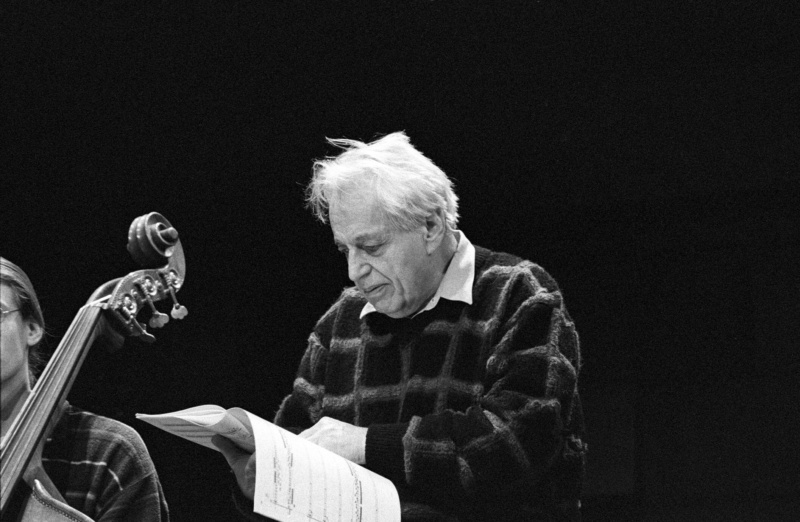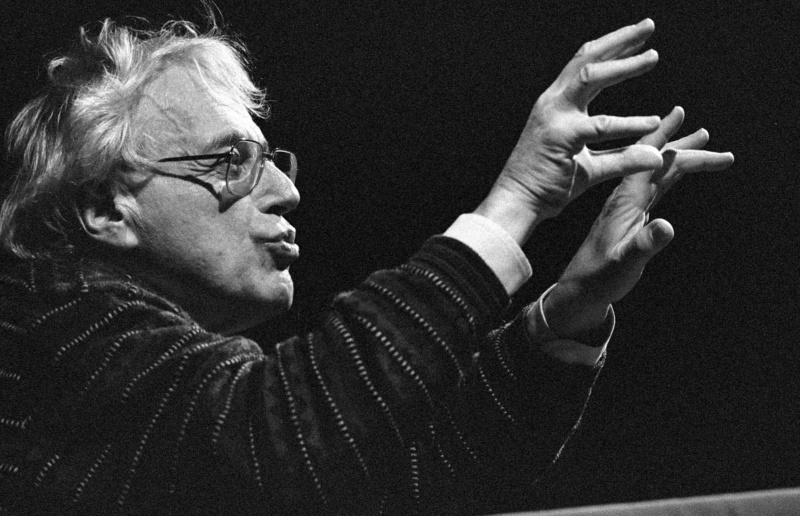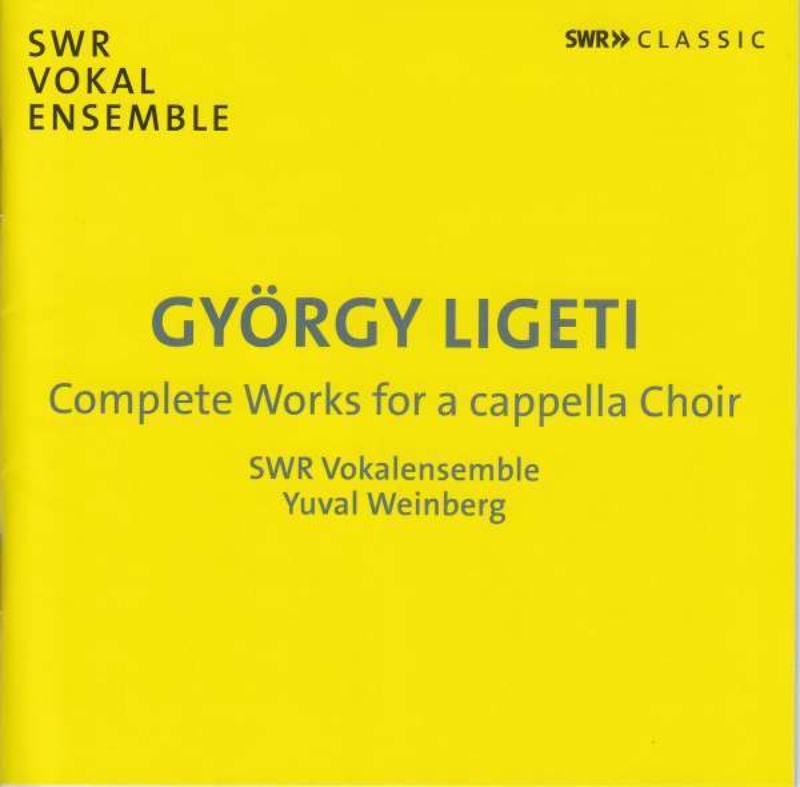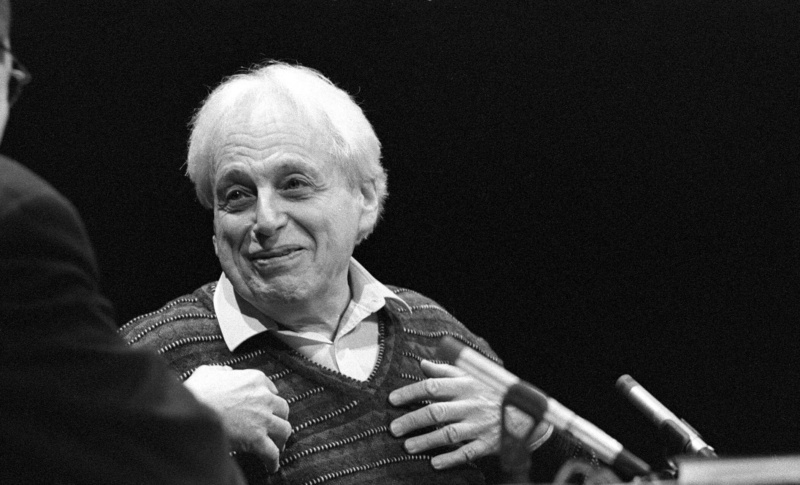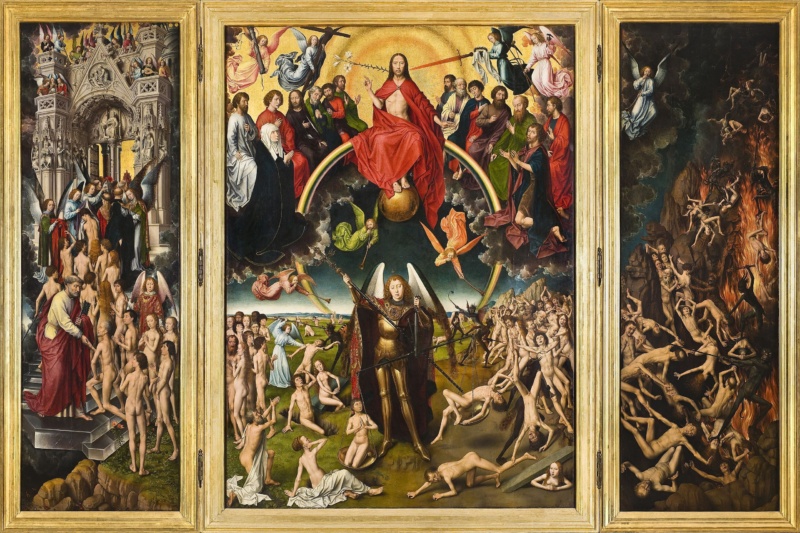With the kind permission of the editorial team (Manfred Stahnke, Sidney Corbett, Hubertus Dreyer, Hans Peter Reutter, Wolfgang-Andreas Schultz, and Mari Takano) we are publishing the foreword to the book, which was released in May 2023 in a bilingual edition (German/English).
Preface: György Ligeti and his Hamburg Composition Class
György Ligeti is a composer whose stance always extended into a multidimensional field. The old and the new in music, or, more generally, artistic and scientific thinking as a whole, were his closest and most inspiring companions and everything new had to be further developed. Yet for him, nothing could be really new without a deep relationship with the old. And the power of the old had to be woven into every new idea. This necessity to subsume what came before into all things new was also his "torture rack". His students in Hamburg experienced this great seeker, this indeed desperate seeker in a most intense way. And he imbued upon us the extreme necessity of taking the next steps, and challenged us to participate and challenged us as, in a great game, to join in the search.
A great many of György Ligeti's students collaborated on this book. Some have come together to assume the editorship responsibilities. And among this group, connections were found and the texts were proofread and edited. This division of labor has made the work on the book very enjoyable. The result is a colorful bouquet of articles, some of which provide astonishing insights into the person, the teacher, the composer György Ligeti, some of which reinforce each other, and all in all include many aspects that would scarcely be accessible to a musicologist coming from outside this inner circle.
We, the editors, have thought about how the period of Ligeti's activity in Hamburg from 1973 to 1989 and beyond could best be represented in this book, with its many and diverse contributions. It would of course have been easy to simply use the chronological appearance of his students in shaping the form of the book. The difficulty was that quite a few of his students remained affiliated with the class over a long period of time, or had been Ligeti's private students. As a result, the earliest of Ligeti's students, Wolfgang von Schweinitz for example, who began his studies in 1973, appear at the very beginning of the book, but they remained part of the conversation within the class, later connecting with composers from a later period, such as Georg Hajdu, who appeared as a guest many times in the 1980s. Renate Birnstein also began her studies as early as 1973 and, like Manfred Stahnke from 1974, was a recurring guest until Ligeti's retirement in 1989. Even after his retirement there were occasional private meetings between Ligeti and members of the class at the Stahnke family's home. Similarly, Hans-Christian von Dadelsen, officially a member of the class beginning in 1975, remained in regular contact with Ligeti until the late 1990s, often attending group meetings. Wolfgang-Andreas Schultz worked for the class continuously from 1977 as Ligeti's assistant for counterpoint and music theory and joined the Stahnkes for all the private Ligeti meetings in 1985, 1994 and 2000.
Thus, the order of the articles only very approximately reflects the chronological relationship between the group members. We as editors have also not been able to encourage everyone to contribute articles to this book. Names such as Roberto Sierra, whose contributions in terms of material from the Caribbean or from Africa (Banda Linda horn music) were to significantly factor into Ligeti's stylistic change in the 1980s, or Denys Bouliane, who conducted intensive interviews with Ligeti, are missing. It also would have been nice to include Unsuk Chin, whose works reveal a deep and close relationship with György Ligeti's thought, as is evident in her opera Alice and in her solo concertos for violin and piano. Sid McLauchlan, the husband of Ligeti's personal assistant, Louise Duchesneau, was briefly in the class, but then switched to the recording profession.
Ligeti's stylistic change, which first appeared in small harpsichord pieces such as Hungarian Rock and Passacaglia ungherese, then clearly manifest from the Horn Trio on, is described by Dadelsen. This change of style influenced the whole class of the 80s and presented us with the extreme challenge to develop new ways of thinking about composed music, incorporating elements from jazz, medieval music, and other, non-European sources of musical thought. But we also discussed mathematics, especially fractals, which were subjects new for us at that time. Guests like Peter H. Richter came to explain these subjects to us. The ethnolomusicologists Gerhard Kubik and Simha Arom also visted the class. The musicologist Annette Kreutziger-Herr introduced the composer Johannes Ciconia, and also the ars subtilior specialist Ursula Günther came to discuss the amazing polymetrics around 1400.
Thus, the development of the "class" reflects two things: In the 1970s, a first exit from historical Cologne-Darmstadt avant-garde was undertaken. Dadelsen engaged with Bob Dylan and pop music as is discussed in his article for this book. Schweinitz made excursions into music history (Mozart Variationen). Ligeti's opera Le Grand Macabre reflects these cross-pollinations. Beginning in the later 1970s, it became increasingly clear to Ligeti that the achievements of the historical avant-garde were dead. He sought ways to regain pulse-based rhythm, in parallel with an audibly traceable, non-anonymous melodic and harmonic structure. This is where the vehement discussions in the class continued, about minimalism, jazz, pop, microtonality, non-European music, and also about European music history. Some of us engaged in these discussions from a more distanced perspective and arrived at our own personal solutions.
Then, in the 1980s, Ligeti, in parallel with the ongoing stylistic arguments in his class, discarded the process-oriented musical thought associated with the avant-garde in his own work. The Three Pieces for Two Pianos (1976), in its quasi-serial, mechanistic structure in the first movement, seem like an end point. Henceforth, the focus is on metrical patterns that reach back to Ligeti's early experiences of Balkan music while also integrating music from outside Europe. At the same time, Ligeti gradually finds ways to move away from 12-tone temperament. This is a long process, integrating just intonation in the Horn Trio (1982) and culminating in the Hamburgisches Konzert (1999-2001). Ligeti had been following Harry Partch's thinking since 1972. He played Partch's records in 1974 without thinking intensively of natural tuning himself, but he did think of microtones, see for example his Double Concerto (1972). Stahnke brought his experience in studying the music of Harry Partch, which was mediated by his studies with Ben Johnston, to the class in 1980. Ligeti's approaches toward natural tuning then intensified from concerto to concerto, first the Piano Concerto for piano, then the Concerto for Violin, and finally the Hamburgisches Konzert for horn, which is the most extreme example of his use of microtonal tunings.
Ligeti's way of thinking, as it emerged in the 1980s, is reflected in works by his students of this period, although there were exceptions, such as Uroš Rojko, who initially stuck largely to the stylistics of the Freiburg School. Detlev Müller-Siemens addressed jazz in Under Neonlight. The last group of students and guests in his class, which includes Mari Takano, Hubertus Dreyer, Hans Peter Reutter, Sidney Corbett, Benedict Mason, Xiaoyong Chen, Kiyoshi Furukawa and Unsuk Chin all addressed these areas of musical thought centering around rhythmic pulsation, polymetrics, fractals, microtonality, integration of graphics, improvisation, pop and jazz, but each of these composers with their own quite different points of emphasis. However, Ligeti's pedagogical approach always encouraged each of us to find our own path forward. Thus there are quite different styles and philosophies of what music could be, which are sometimes far from Ligeti's own stance. Students such as Renate Birnstein, Jeanne Zaidel-Rudolph, Malcolm Singer, Tamae Okatsu, Wolfgang-Andreas Schultz, Friedrich Jaecker, Michael Daugherty, John (Johann Maria) Gropp, Momoko Oya, Altug Ünlü, Mike Rutledge all took very different paths.
Some students have chosen not to contribute to this book, for a variety of reasons. Volker Helbing, for example, is writing a book on Ligeti's Violin Concerto and is heavily absorbed. Babette Koblenz appears in Dadelsen's contribution. We were unable to locate Gary Greenberg and Eberhard Müller-Arp. Jenő Márton, the subtle and quiet man, has passed away. A few have not responded or simply declined to participate. It is our great pleasure, that Lukas Ligeti has decided to participate in this book project, as he has maintained contact with some of György Ligeti’s students over the years.
We believe that in the overview of all the articles collected in this book, Ligeti's personality can be found, at least as concerns those aspects that were accessible to us. Not surprisingly, new facets of this complex personality continue to emerge.
György Ligeti
im Spiegel seiner Hamburger Kompositionsklasse
through a glass, and darkly, but face to face
(ed.) Manfred Stahnke, Sidney Corbett, Hubertus Dreyer, Hans Peter Reutter, Wolfgang-Andreas Schultz, Mari Takano

